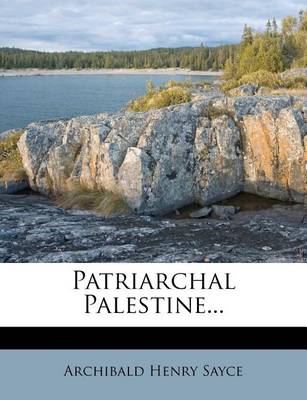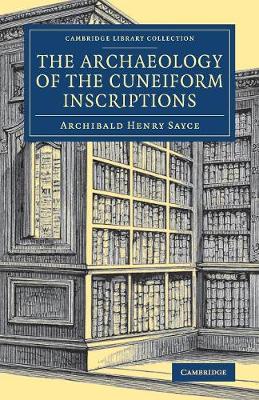Cambridge Library Collection - Archaeology
4 total works
Archibald Henry Sayce (1845-1933) became interested in Middle Eastern languages and scripts while still a teenager. Old Persian and Akkadian cuneiform had recently been deciphered, and popular enthusiasm for these discoveries was running high when Sayce began his academic career at Oxford in 1869. This 1894 work, published by the Religious Tract Society, is an introduction for a popular readership to the world of ancient Assyria. Beginning with the geography of Mesopotamia and with the early archaeological discoveries in the region, Sayce next describes the decipherment of the cuneiform inscriptions and tablets, and the knowledge gained from them, especially about the history of the region, and government and organisation, before describing religion, literature, and what can be deduced about everyday life. An appendix gives weights and measures, lists of kings and gods, and a chronological table linking events known from the archaeological record to accounts in the Old Testament.
Archibald Henry Sayce (1845-1933) became interested in Middle Eastern languages and scripts while still a teenager. Old Persian and Akkadian cuneiform had recently been deciphered, and popular enthusiasm for these discoveries was running high when Sayce began his academic career at Oxford in 1869. In this 1895 work, he considers the history of the Holy Land in the context of the flood of new documentary and archaeological material which had come to light in the course of the nineteenth century. Sayce's approach opposed the 'higher criticism' which sought to demonstrate that the stories of the Old Testament should not be interpreted literally; in his opinion, 'in the narrative of the Pentateuch we have history and not fiction', and he believed that archaeological discoveries supported his view. Although this approach was already outdated, his reconstruction of the history of the ancient Near East remains of interest to historians of archaeology.
Archibald Henry Sayce (1845–1933) became interested in Middle Eastern languages and scripts while still a teenager. Old Persian and Akkadian cuneiform had recently been deciphered, and popular enthusiasm for these discoveries was running high when Sayce began his academic career at Oxford in 1869. In this 1907 work, based on lectures delivered in Edinburgh in the previous year, he considers the state of archaeological knowledge of Babylonia and Assyria, which he describes as 'miserably deficient', and in particular the paradox of a huge number of cuneiform tablets in various languages drawn from many sites at which the original excavation had not provided an adequate context. Beginning with the history of the decipherment of cuneiform, Sayce goes on to describe what the tablets reveal of political and trade interactions among the different nations of the Near East and Asia Minor, and the relevance of these discoveries to Old Testament studies.
Archibald Henry Sayce (1845-1933) became interested in Middle Eastern languages and scripts while still a teenager. Old Persian and Akkadian cuneiform had recently been deciphered, and popular enthusiasm for these discoveries was running high when Sayce began his academic career at Oxford in 1869. This work in 'The Semitic Series', intended to present 'a knowledge of the more important facts' in the history of the Near Eastern civilisations, was published in 1900. Sayce's account begins with the geographical and historical background, and then surveys life in the cities, from the family and its home to the government, the law and the army, economic issues such as slavery, prices and banking, the extent and relevance of literacy, and the importance of religion. Scholarly, but written for a popular audience, this work remains of relevance to anyone interested in studying the everyday lives of ordinary people in this ancient society.



